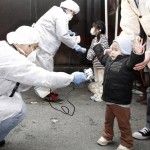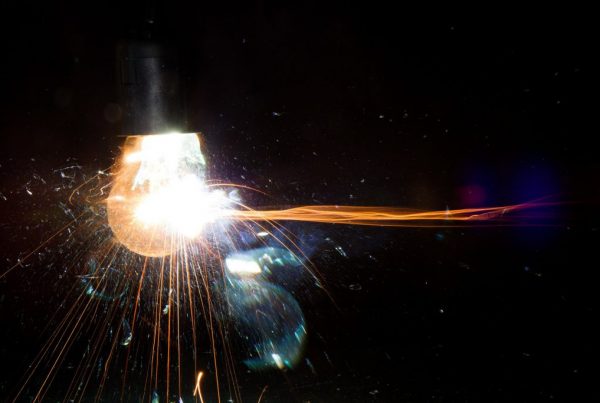A critical part of Crisis PR is the recovery of credibility after an event, and the media’s role in that – something the TEPCO folks in charge of Fukushima continue to struggle with.
Apparently the recent press tour (below) of the plant was to show the world that TEPCO was close to stabilizing the plant – but it provided an opportunity for the media to discuss the environmental and human damage within the 12 mile evacuation zone, plus ongoing concerns at the plant. There is a time when a tour like this is appropriate – and a time when it is not. It seems the Japanese authorities are still unaware of how handle the untamed international media. It going to be a long way back.
Below is an article from the NYT, that for Crisis PR practitioners is an example of how a badly thought through media strategy does nothing to rebuild reputation.
Devastation at Japan Site, Seen Up Close

By MARTIN FACKLER: Published: November 12, 2011
AT FUKUSHIMA DAIICHI NUCLEAR POWER PLANT, Japan — The most striking feature at this crippled plant on Saturday was not the blasted-out reactor buildings, or the makeshift tsunami walls, but the chaotic mess.
In a country as orderly as Japan, the fact that the scene has changed so little since the early days of the disaster eight months ago is as telling a sign as any of the daunting tasks workers have faced as they struggled to regain control of the plant’s three badly damaged reactors.
The press tour of the site, the first since disaster struck March 11, appeared to be Tokyo Electric Power Company’s way of declaring its confidence that it was close to stabilizing the plant.
That message was driven home by the minister supervising the government’s response to the nuclear accident, Goshi Hosono, who visited the plant at the same time as the journalists. Speaking to hundreds of workers crammed into the plant’s crisis response center, he praised their hard work in difficult and dangerous conditions.
“You were able to put an end to the very excruciating predicament that we faced in March and April,” said Mr. Hosono, who wore the blue uniform of the workers. “That is why we are able to get where we are now.”
The hopeful talk skims over more troubling truths. Just two weeks ago, Tepco announced it found telltale signs that one of the reactor cores may have experienced a burst of renewed fission, a frightening sign that the company might not be as close to a stable shutdown as it said. And even when that milestone is reached, the country faces decades of budget-draining cleanup before the surrounding countryside can possibly become habitable again.
While no one died in the nuclear accident, the environmental and human costs were clear during the drive to the plant through the 12-mile evacuation zone.
Untended plants outside an abandoned florist were withered, and dead. Crows had taken over a gas station. The dosimeters of the journalists on the bus buzzed constantly, recording levels that ticked up with each passing mile: 0.7 microsieverts in Naraha, at the edge of the evacuation zone, 1.5 at Tomioka, where Bavarian-style gingerbread houses had served as the welcome center for Fukushima Daiichi. It was there that Japanese visitors to the site were told a myth perpetuated over decades in Japan: that nuclear power is absolutely safe.
The level recorded just outside the center Saturday was 13 times the recommended maximum annual dosage for civilians.
At the plant, journalists, outfitted in full contamination suits, were kept aboard the bus in recognition of the much higher radiation levels there.
The company’s minders on the bus were eager to show off one of its major accomplishments so far: the completion of a huge superstructure built over reactor No. 1, designed to trap radioactive materials. The company said a similar cap would soon be built over the heavily damaged No. 3 reactor.
The tour guides also pointed out a complex of large white tents that flew American, French and Japanese flags and housed a massive system built by companies from those countries for decontaminating water.
The water is part of a new cooling system that Tepco says has finally reduced the temperatures in the damaged reactor cores below 100 degrees Celsius, a necessary step to achieving what is known as “cold shutdown.” The system replaced the desperate cooling measures taken after the ordinary system was knocked out by the tsunami, when fire trucks poured water onto the reactors in an effort to keep them from overheating and melting down even further than they had.
Dozens of those fire trucks were still at the plant on Saturday, as was a field full of newly constructed four-story-tall silver tanks to house much of the 90,000 tons of contaminated water that had been dumped on the reactors.
That number helps explain the enormity of what happened at Fukushima — and the challenges ahead. Another figure that tells the story: so far, Tepco has stored 480,000 sets of used protective clothing, discarded after each use by workers.
The star of Saturday’s press briefing was Masao Yoshida, the manager of the plant and a man now revered for his stamina over months of grueling, and often dispiriting, work.
During the briefing, he mainly stuck to the message that Tepco was hoping to deliver: “I have no doubt the reactors have been stabilized,” he said. But in an echo of the plainspokenness that won the admiration of Naoto Kan, the prime minister at the peak of the crisis, he added a note of caution: “There is still danger.”
That view is shared by many nuclear experts, who say serious challenges remain.
The biggest is the fact that the company does not know the exact condition of the fuel within the No. 1 and No. 3 reactors, whose cores appear to have melted through the inner containment vessels.
“Cold shutdown is an indication that the accident phase is over,” said Akira Tokuhiro, a professor of nuclear engineering at the University of Idaho in Idaho Falls, “but the next phase of cleaning up will take more than 20 years.”
During the plant tour, the bus kept moving at the most contaminated areas near the base of the reactors to limit the time there and, thus, the radiation exposure. As it did, a radiation detector on the bus jumped to 300 microsieverts per hour — high enough to reach the annual recommended maximum dosage in just over three hours.
The only humans visible in the plant were groups of workers in white hazmat suits and red or yellow hard hats. They appeared oddly out of place among the quiet pine forests over much of the plant’s grounds, populated still by dragonflies.
One worker, Hiroyuki Shida, 57, said conditions in the plant had greatly improved with new comforts like a workers’ lounge and a place to eat.
“The mood inside Fukushima Daiichi is totally different now,” said Mr. Shida, who monitors contaminated waste. “Now, radiation levels aren’t so high outside the buildings. But they are still high within the reactor buildings. And there are hot spots, so we have to be careful.”
That caution was on full display at the only building within the plant where protective clothing is not needed. Visiting journalists passed through a series of rooms where teams of workers systematically cut off the layers of protective clothing with scissors. The discarding is done in stages to limit contamination; booties come off in one room, the full body suit in another.
Inside the center, the walls are covered with strings of paper cranes — the symbol of wishes to be granted, in this case the safety of the plant’s brave workers and the resolution of the crisis. There are also posters covered with autographs and words of encouragement.
“Hang in there,” says one. “For Fukushima, for Japan and for the world.”





